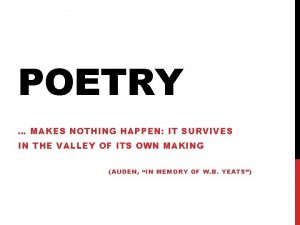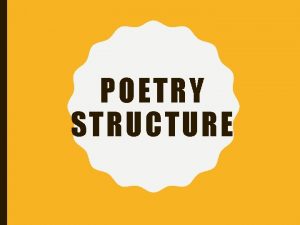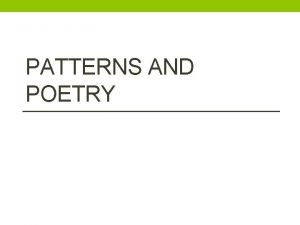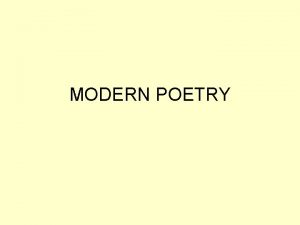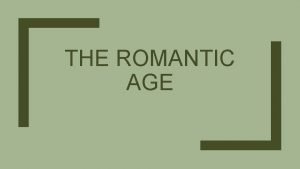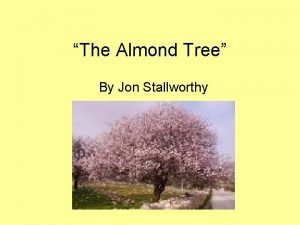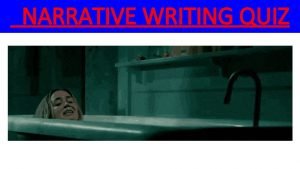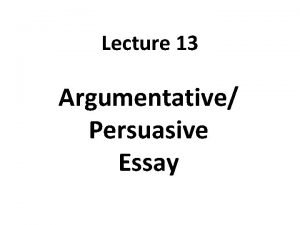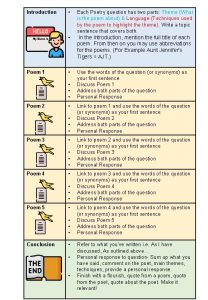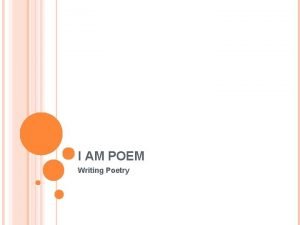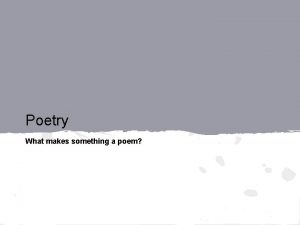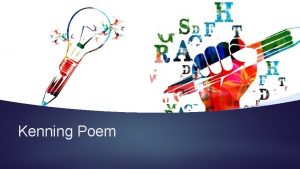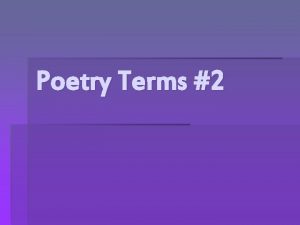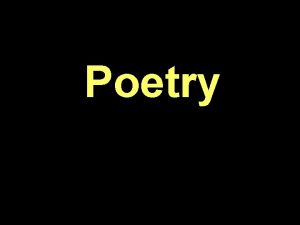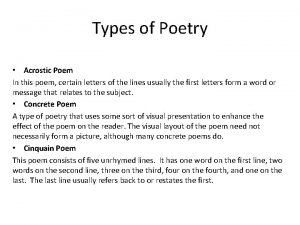WHAT MAKES A POEM POETRY Poetry is writing










- Slides: 10

WHAT MAKES A POEM

POETRY Poetry is writing in a metrical form that is used to create images in the mind of the reader. Poems are always broken up into lines. The length of each line and where it breaks contribute to the poem’s meaning and sound. Lines often appear in groups, called stanzas. The stanzas work together to convey the overall message of the poem.

POETRY Some poems follow the rules of a traditional form. There are many different types of traditional poems, which we will learn more about later… Other poems are unconventional, with no recognizable patterns. This type of poetry is called free verse. Sometimes a poet will use incorrect grammar or spelling to create a particular sound or to emphasize meaning. Every poem has a voice or speaker. Sometimes the speaker is a fictional character; other times it is the writer or an unknown narrator.

POETRY Some poems follow the rules of a traditional form. There are many different types of traditional poems, which we will learn more about later… Other poems are unconventional, with no recognizable patterns. This type of poetry is called free verse. Sometimes a poet will use incorrect grammar or spelling to create a particular sound or to emphasize meaning. Every poem has a voice or speaker. Sometimes the speaker is a fictional character; other times it is the writer or an unknown narrator.

TRADITIONAL FORMS OF POETRY There are many types of traditional poems. Some of these include: v Narrative: Poetry that is written to tell a story. Narrative poems resemble short stories, because they contain a plot, characters, a setting, and other literary elements. v Ballad: A narrative poem that is meant to be sung and focuses on a single tragic event. v Epic: A long narrative poem about the life of a hero, whose actions reflect the values of the group he or she belongs to.

TRADITIONAL FORMS OF POETRY v Lyric: Poetry that is written to express emotion. Lyric poems are usually short and focused on a single idea. They have a single speaker, who expresses personal thoughts and feelings. v Ode: A type of lyric poem that deals with an important topic. v Elegy: Poetry that is written for the purpose of paying tribute to a person who has died or to share reflections on an equally serious subject.

TRADITIONAL FORMS OF POETRY v Sonnet: A lyric poem with a specific structure. A sonnet always includes 14 lines and is usually broken up into quatrains (a quatrain is four lines of verse) with a couplet (two lines of verse) at the end. Sonnets always contain a set rhyme scheme and meter. v Free Verse: Poetry that does not have a regular rhyme scheme or meter. The form is determined by the poet and can be anything he or she wants it to be.

SOUND DEVICES Poets choose words not only for their meanings, but also for their sounds. The sound of a word or a line can help emphasize meaning or create a musical quality. Some of the sound devices poets use include: v Rhythm: The pattern of stressed (´) and unstressed (˘ ) syllables in each line. v Meter: A regular pattern of rhythm. v Rhyme: The repetitions of sounds at the ends of the lines, as in “sun” and “one. ”

SOUND DEVICES v Rhyme Scheme: The pattern that the end-rhyming words follow. Letters are assigned to each sound to determine rhyme scheme, as shown below: Stopping by Woods on a Snowy Evening by Robert Frost Whose woods these are I think I know. His house is in the village, though; He will not see me stopping here To watch his woods fill up with snow. A A B A My little horse must think it queer To stop without a farmhouse near Between the woods and frozen lake The darkest evening of the year. B B C B He gives his harness bells a shake To ask if there is some mistake. The only other sound’s the sweep Of easy wind and downy flake. C C D C The woods are lovely, dark and deep, But I have promises to keep, And miles to go before I sleep. D D

SOUND DEVICES v Repetition: The use of a word, phrase, line, or sound more than once, such as the repeated use of the phrase “And miles to go before I sleep. ” v Alliteration: The repetition of consonant sounds at the beginning of words, such as the “P” sound in “Peter Piper picked a peck of pickled peppers. ” v Assonance: The repetition of vowel sounds in words that don’t end with the same consonant, such as “E” sound in “She sells seashells by the seashore. ”
